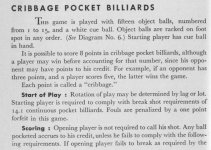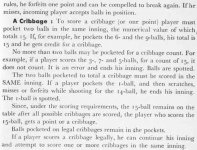I am trying to create a full rack game harder than 8-ball and easier than 15 ball rotation. This game involves the COLORS of the balls. "Groups" means solids and stripes. "Numbers" are obviously needed for rotation games. In this game you literally need to use the "colors". It's a cross between eight ball and rotation. I don't have this completely worked out, so any input is welcomed.
edit: But a pretty good summary is now in post #18.
Here's the general idea.
At the beginning of you inning, you have to nominate a color of your choice and shoot that color. So if you called the 10 ball and made it, next you must shoot the 2 ball. Then you may nominate another color of your choice and shoot both balls, and so on. After ALL other balls are down, ONLY then may you shoot the money 8-ball for the win.
Any constructive comments are welcomed. If you think the game is broken, please make suggestions. I haven't tried it on the table yet.
Fatz

